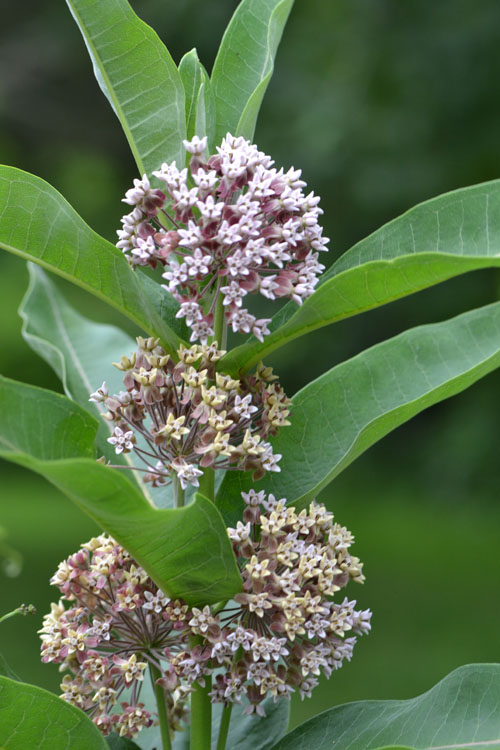 It’s nice to see these milkweeds popping up everywhere, alongside roads and in meadows. The plants don’t require much tending – they prefer dry well-drained soils and full sun, and will do fine in poor soils as well. Common milkweed is quite drought tolerant. The plant can be grown from seed, and will readily self-seed. Additionally, common milkweed will spread by rhizomes.
It’s nice to see these milkweeds popping up everywhere, alongside roads and in meadows. The plants don’t require much tending – they prefer dry well-drained soils and full sun, and will do fine in poor soils as well. Common milkweed is quite drought tolerant. The plant can be grown from seed, and will readily self-seed. Additionally, common milkweed will spread by rhizomes.
This perennial, native to most of the United States except for the western states, grows 3 to 6 feet tall, and has broad, somewhat shiny, leaves. It has ball-like, slightly drooping clusters of pink and purple flowers. The stems and leaves produce a milky sap when cut or bruised – it is “milkweed” after all. In the fall, the flowers will produce seed pods that look like a pita or bread pocket. These pods will split open and release seed that is built perfectly for wind dispersal – they have silky feathery attachments.
Common milkweed feeds many butterflies, but in particular the Monarch butterfly. Its caterpillars feed on the leaves of this plant.
Asclepias syriaca is apparently quite edible. Sure, all parts of the plant have some toxins, but consuming the plant raw in small doses is fine. When dealing with larger amounts, boiling and cooking will eliminate the residual toxins. The following electronic re-publication of a 2003 Forager’s Harvest article illuminates the many uses, culinary and otherwise, of common milkweed. Well worth a read. I may stick to propagation solely for the benefit of butterflies, peronally…

common milkweed July 8 2011, Keveney Lane, Cummaquid

common milkweed July 8 2011, close-up of flowers
Leave a Reply